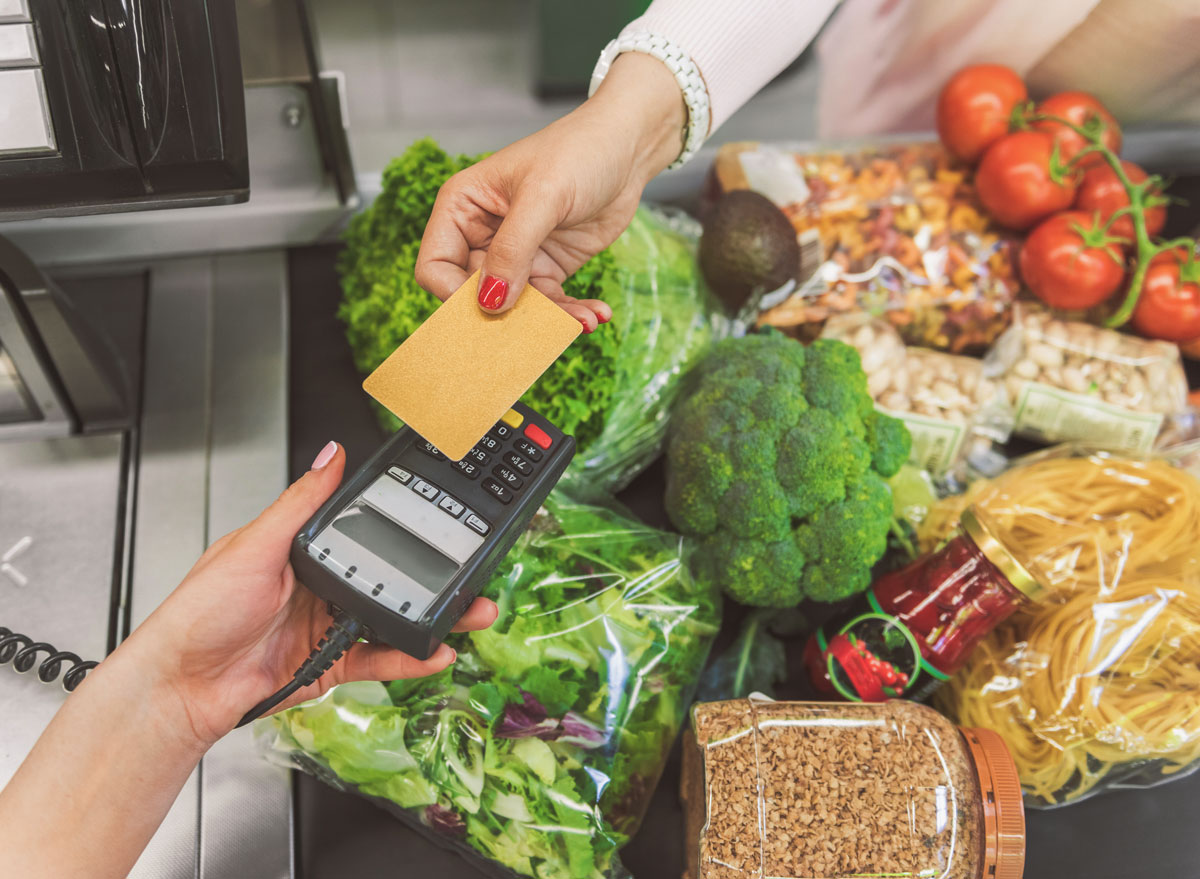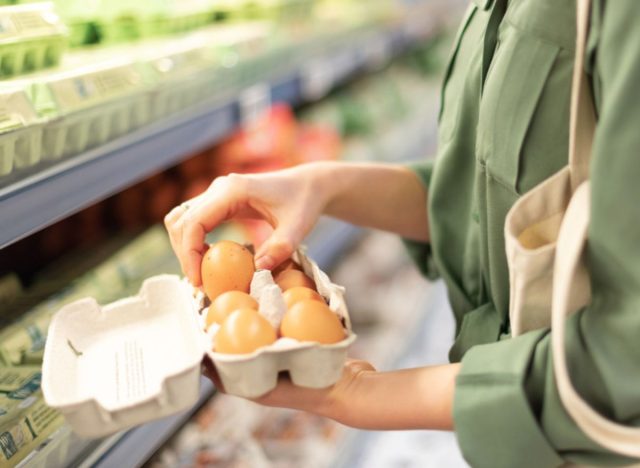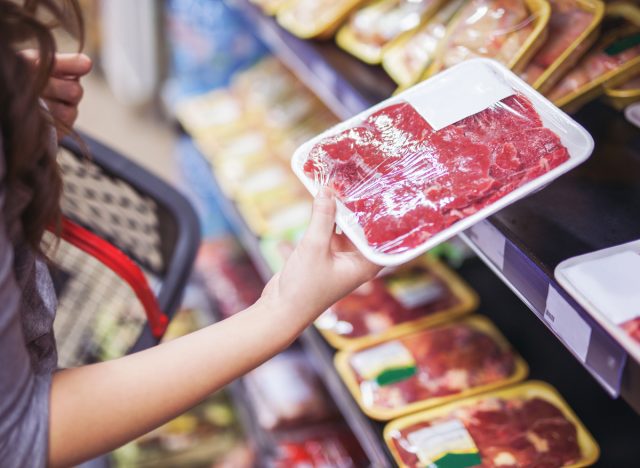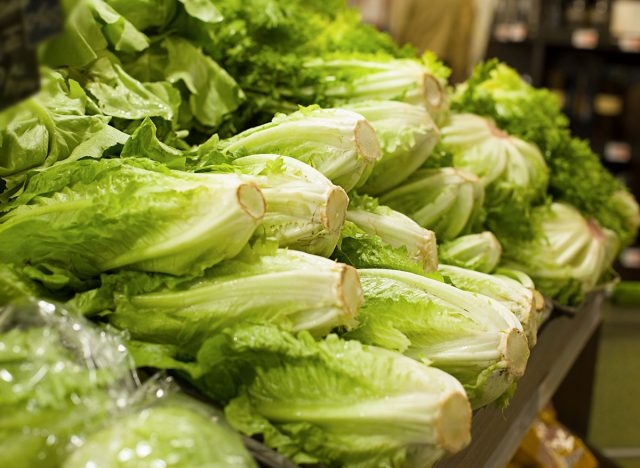5 Most Expensive Grocery Items on Shelves Right Now

From fuel to airfare to housing, the cost of living has surged across the board in the United States. However, one area that hits home the hardest is grocery bills, or as the U.S. government’s Consumer Price Index terms it, “food at home.”
As food and drinks are necessities that you shop for on a weekly basis, Americans are much more attuned to price increases and decreases at the grocery store. Over the last few years, the narrative has been vastly one-sided, with increases outweighing price drops. In 2022, grocery prices jumped by more than 11%, and 2023 saw another 5% increase, according to the U.S. Department of Agriculture.
The silver lining is that the grocery sector is showing signs of improvement. But that doesn’t mean you’ll be reverting to your 2019 food budget soon.
“For the last six to 12 months, the rate of inflation has fallen significantly, but that doesn’t mean that prices are declining. They’re just not going up as much,” says Michael Swanson, chief agricultural economist at Wells Fargo. “Consumers just have to associate a new price point with everything they buy in the supermarket. We’ve come to a new plateau, relatively speaking. We stepped up from over pre-COVID where we are today and we aren’t going to shoot up anymore. But, we’re not gonna drop that much either.”
Aligning with Swanson’s point about the slowing of inflation, the latest 2024 Consumer Price Index shows that overall grocery prices remained relatively flat through February and March. Wheat-based products such as bread, flour, and cereal have decreased in price as the effects of the war in Ukraine have begun to level back out, Reuters reports. Consumers are seeing some relief in the dairy aisle, as well.
Even where some prices may have dropped, however, other categories have gone up in what seems to be an ongoing teeter-totter effect. Primarily due to inclement weather around the world and disease impacting both crops and animals, some items at the grocery store are wreaking havoc on consumers’ wallets. Let’s look at some of these products that are still tipping the scale and which will be more costly this spring.
Eggs

Eggmageddon has been ongoing since 2022 when avian influenza first reared its ugly head and decimated poultry flocks across the country. The problem hit its peak in January 2023, when egg prices reached $4.82 per dozen. Costs have since fallen back to around $3 in March. But consumers should avoid counting their cheaper eggs before they hatch.
According to the latest Consumer Price Index, egg prices are still below their peak in early 2023 but are creeping back up again. Costs swelled 4.6% in March, after an increase of 5.8% in February and 3.4% in January.
The reason for the latest round of price hikes is more of the same. New bird flu outbreaks were reported at the end of 2023, affecting California, Texas, and Michigan. This resurgence has claimed 13.64 million egg-laying hens so far, according to the latest USDA’s Livestock, Dairy, and Poultry Outlook report, released in February. As a result, experts expect egg prices to continue to inch up in 2024.
Beef

If hearty pot roasts and juicy hamburgers are part of your family’s weekly meal schedule, you’ll need a larger grocery budget in 2024. Alternatively, if your money can’t stretch any further, a less carnivorous diet may be in your future.
The problems in the beef market started brewing in 2023, with rising supply costs and drought ravaging ranchers in the Midwest and other regions of the country. Farms were forced to sell off cattle to make ends meet, and as a result, January 2024 reported the lowest cattle inventory the country has seen since 1951, at 87.2 million.
“The latest cattle numbers are a stark reminder of the challenges facing America’s farmers and ranchers,” said Zippy Duvall, president of the American Farm Bureau Federation president Zippy Duvall, in a February press release. “Severe weather, high inflation, and geopolitical uncertainty are taking a toll on farmers across the country, and families will see the effects in their grocery bills.”
According to the most recent March 2024 Consumer Price Index, prices for beef and veal are up by 7.6% compared to this time last year. And, when you drill down to specific categories like beef steaks and beef roasts, the increases are even higher. Unfortunately, the problem is expected to get worse before it gets better, with prices reaching “record levels” this year and the sticker shock extending into 2025.
“The thing about the beef category is that it’s very slow to fix,” Swanson explains. “It just takes years to really make a big difference. And we’ve just really started that process.”
In the meantime, consumers can find solace in other protein categories, such as pork, which has seen smaller marginal increases. Fresh fish and seafood have seen decreases in cost over the past year.
Frozen Juice

The rising cost of citrus fruits was a major storyline in 2023. Specifically, orange supplies suffered last year due to citrus greening, a bacterial infection. This disease wiped out acres of orange trees in Florida, where growers were still bouncing back from the hurricanes that shredded the region in 2022.
Oranges, tangerines, and grapefruit are all poised for a slightly better growing season. Plus, the March 2024 Consumer Price Index reveals that prices of citrus fruits as a whole have fallen by 1.3% in price since last March.
However, one niche category continues to show massive increases. Frozen non-carbonated fruits and drinks—including things like frozen orange juice, apple juice, and other concentrates—have spiked up a staggering 27.5% in price since last year.
In addition to Florida’s various disease and weather woes, rising prices of sugar, transportation, and labor costs may be at play here. But, no matter the cause, customers should expect to pay top dollar for these products well into spring and possibly summer. As just one example, the average price of one 12-ounce can of frozen orange juice is currently $4.26, an increase of more than 50% compared to the start of 2023 when the same product cost $2.82.
Lettuce

With lettuce prices soaring, it may be time to look for a new leafy green to fill your salad bowl. Alternatives like spinach and kale are ripe for the picking this time of year.
The cost of the crunchy green vegetable went up by nearly 6% in March 2024, following a 2.5% hike in February and a 1% increase in January, according to the March 2024 Consumer Price Index. The reason has everything to do with variable weather, specifically in Arizona and California, where the bulk of the country’s lettuce supply is grown. According to produce industry tracker Blue Book, “Alternating weeks of warm and cold weather, as well as rain and hail, have reduced supplies.” The quality of surviving crops has also diminished as issues like rot, mildew damage, and discoloration have become more common.
Geoffrey Ratto of Ratto Bros Inc., a California-based vegetable farm and agricultural company, told agricultural site Fresh Plaza that the rain in areas of northern California and the desert “will make spring more challenging,” and prices for romaine, red, and green leaf lettuces will likely be affected until supply volumes return.
This adverse weather also comes on the heels of a major 2022 hit to the lettuce market when an insect-borne virus tore through California’s Salinas Valley—an area responsible for close to half of the country’s lettuce supply—destroying thousands of crops and costing growers approximately $150 million in lost gross revenue.
Chocolate

Some might agree that chocolate is worth its weight in gold—which may be true if prices continue to surge.
CNN reported that retail chocolate prices rose 11.6% in 2023, with no signs of letting up in 2024. This not-so-sweet phenomenon is tied to the rising cost of cocoa, which results from bad weather and crop diseases in West Africa—a region responsible for 70% of the world’s cocoa production.
“The cocoa from West Africa has spiked to real bubble levels,” Swanson says. “If they’re gonna make chocolate bars and chocolate chips from that they’re going to have to raise the prices because they can’t go bankrupt.” Hotter temperatures and other climate change-induced weather patterns across the entire region are largely to blame. This, coupled with the spread of blackpod disease in Ghana, Nigeria, and the Ivory Coast, has created the perfect storm.
Confection companies, including Hershey and Cadbury, have been impacted by these inflated supply costs and passed off some of that burden to consumers. According to Ken Goldman, lead equity research analyst for U.S. food producers and food retailers at J.P. Morgan, shoppers have noticed.
“In the U.S., snacks in general have been slumping a little bit over the last two months, likely because they are a little bit more discretionary in nature,” Goldman said in a recent report. “Within the category itself, we have seen some shifting away from chocolate to other products, whether that’s cookies or salty snacks. We think chocolate’s losing a bit of share, so consumers are certainly reacting to higher prices.”
- Source: https://www.ers.usda.gov/data-products/food-price-outlook/summary-findings/
- Source: https://www.bls.gov/news.release/pdf/cpi.pdf
- Source: https://www.bls.gov/news.release/pdf/cpi.pdf
- Source: https://www.nerdwallet.com/article/finance/why-are-eggs-so-expensive
- Source: https://www.bls.gov/news.release/pdf/cpi.pdf









